Writing and photography by Justin Negard
“They call me the quiet guy,” says painter Richard Chandler. “But I’m really not. If you pay attention, I’m actually making a lot of noise.”
Chandler is a man of contradictions. His slender appearance and thick-rimmed glasses are unassuming yet visually striking. He speaks in soft tones yet serves as the voice of many as an artist representative. He keeps to himself yet is a student of music and Latin percussion. He presents himself with humility, yet his work is bright and bombastic.
“The first question I often receive is, ‘Were you stoned when you painted that sky?’” says Chandler. “No. That’s just how I see it. And that’s what art is about – being true to yourself and maybe bringing out some of your hidden coo-coo nature.”
Chandler’s “coo-coo nature” and striking visuals are recognized worldwide. Art collectors, celebrities and anyone with a keen eye for art throughout the United States, Mexico and Europe have purchased his work.
Yet despite his success, Chandler is unfazed by the art scene. He says he paints because he must – always working, thinking and traveling with art in mind.
“If I leave the house and I don’t have something to draw with, I feel guilty,” he admits. “It’s like I’m denying myself something that I should absolutely have with me all the time. It’s really an affliction.”
To that end, Chandler will often traverse with a sketchbook in hand, beginning a new painting with pencil and pastels before bringing the idea to oil paint on canvas back in his studio. On some occasions, he may even be found with a portable easel propped up along a sidewalk in New York City as he captures a scene that he couldn’t bring himself to ignore. It is this spontaneity that really entrances him.
“I’m sort of amazed that things happen out of nothing,” says Chandler. “I see something and can’t let it go. If I put the time in, things will emerge on their own in spite of me. It’s really nice. I feel sorry for those who don’t have that in their lives.”
Chandler has held many titles in his life, ranging from musician and filmmaker to art director and artist representative, always allowing his art to serve as his voice.
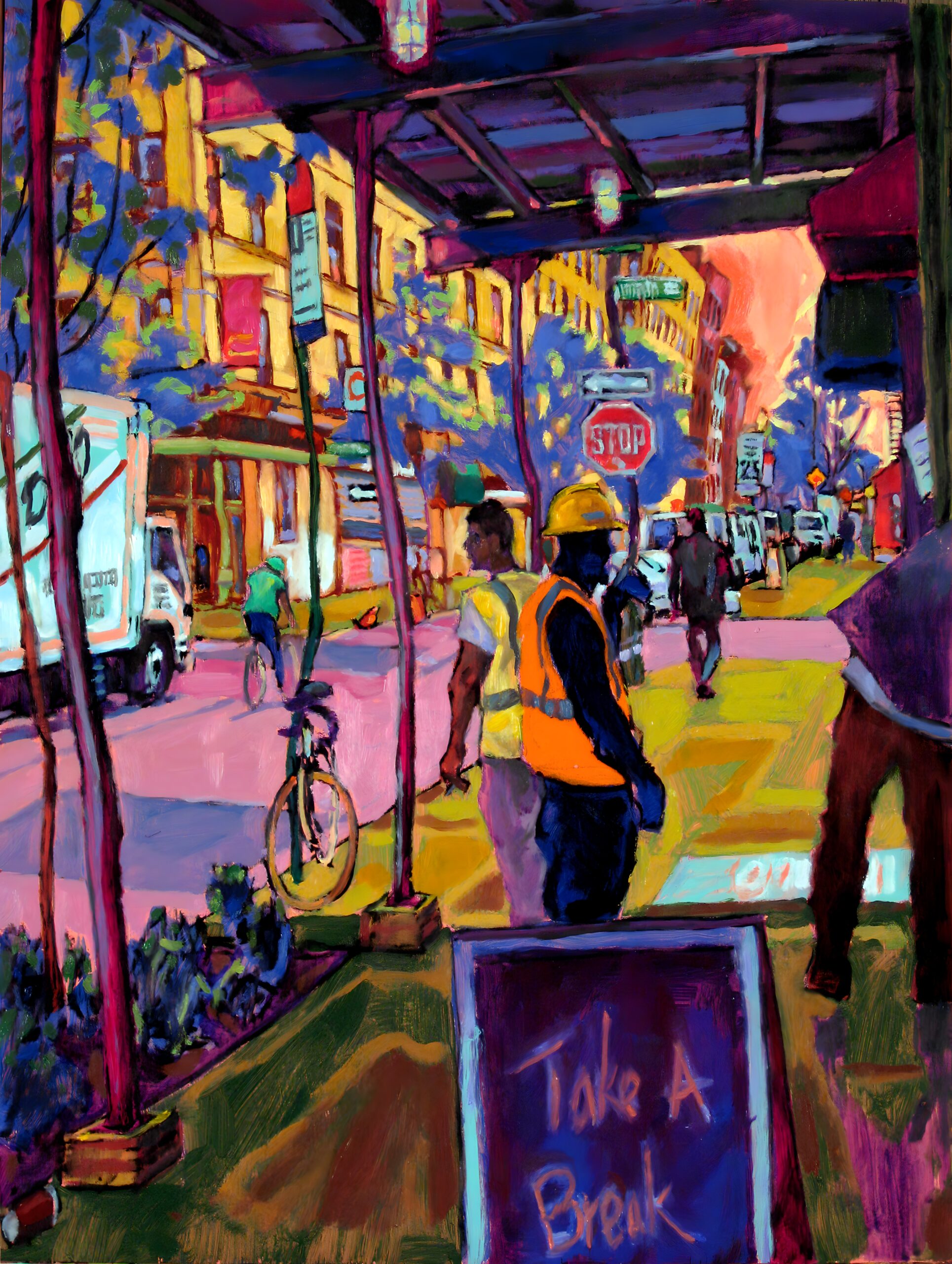
The colorist
The very first thing one might notice about a Chandler painting is the color.
“I’ve always had a visceral response to color,” he says. “That’s how I would handle my ‘quiet man syndrome.’ If I couldn’t express myself verbally, I had to do it artistically, and color was one way for me to do that.”
“Some say it takes courage to use a lot of color, but I didn’t have a choice in the matter,” he continues. “I had to in my heart. My classmates and workmates were scared to use color, and we would discuss it for hours. I never understood that.”
While he’s influenced by some impressionists, his personal heroes include abstract artists Paul Klee, Wassily Kandinsky and Richard Diebenkorn – all artists who shared an appreciation for strong colors.
“I come up with my own preferred colors,” says Chandler. “For example, I recently discovered Carmine red which I’ve been using a lot lately in my work. That’s funny to me because I’ve been painting for forty years, never used a particular color before, and then I suddenly go hog wild with it. A new tube of paint is like a new toy.”
Despite all of this, Chandler will never say that his work is saturated in color.
“Some try to tell me the hues are exaggerated in my work,” he comments. “But they’re not. That’s exactly how I see the world.”
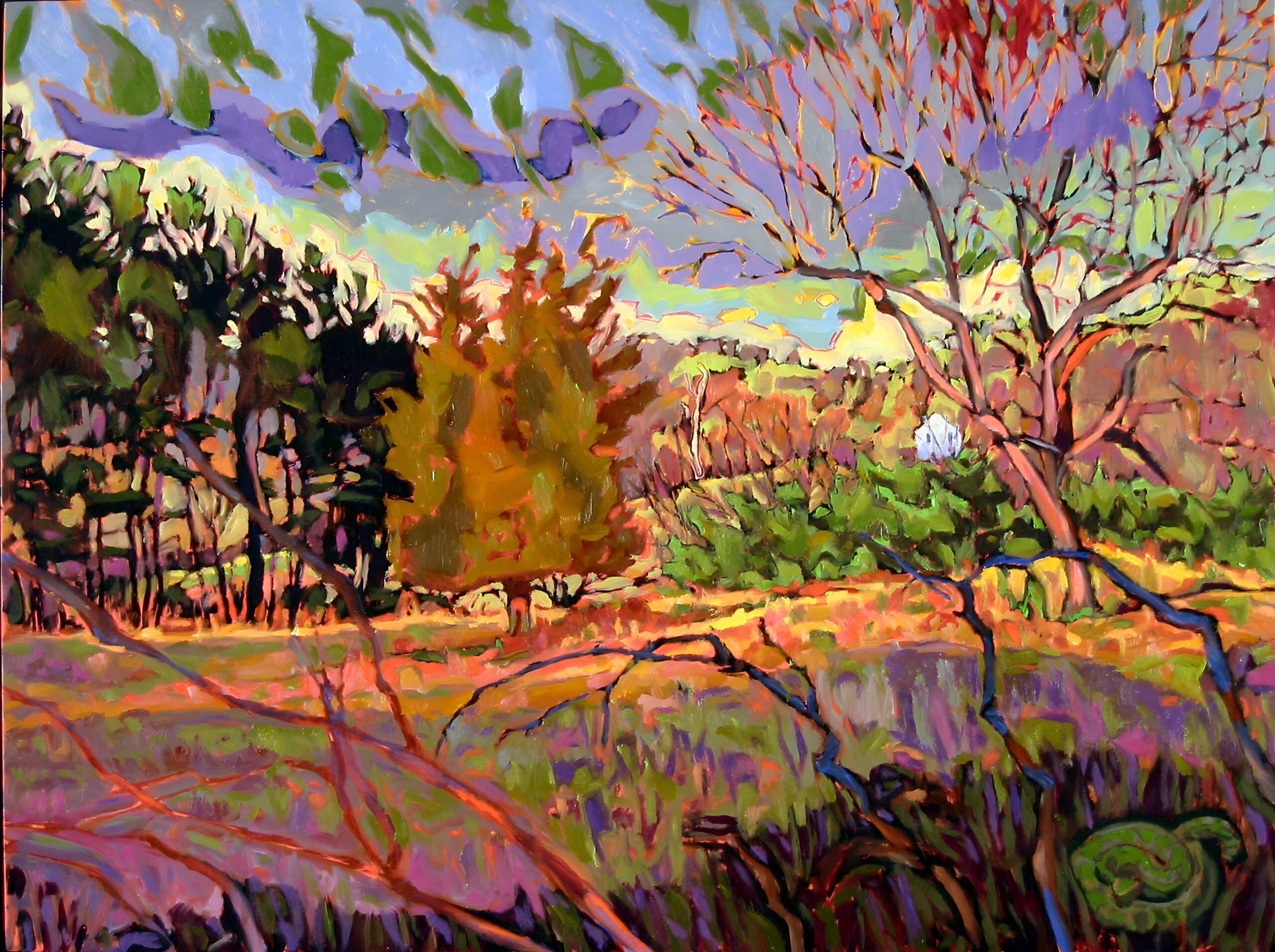
The young filmmaker
Chandler grew up in Tenafly, New Jersey, just across the Hudson River from Manhattan.
“I consider myself a true New Yorker at heart,” says Chandler. “Despite living in New Jersey, I was actually born in Manhattan and made it a point to cross the George Washington Bridge into Manhattan any chance I could.”
He was a creative child, with a passion for the arts as far back as he can remember.
“I was always painting and creating things,” recalls Chandler. “When times were tough, my go-to was always art projects. Drawing, painting, a love of color – I could never shake that.”
His creativity expanded into the world of music as well, largely thanks to a neighborhood friend.
“As a boy, I studied percussion with the principal percussionist of the New York Philharmonic,” remembers Chandler. “His name was Walter Rosenberg, and for reasons I can’t quite explain, he wanted to teach me and my best friend how to play the drums. I learned the whole orchestra — marimba, timpani — the whole thing. He greatly influenced my youth. He eventually took us backstage at the New York Philharmonic, and we attended concerts at Lincoln Center, which was extremely nice.”
Chandler also steered his creativity towards filmmaking, playing with techniques around animation and creating his own short films.
“I set up an old movie camera for myself,” says Chandler. “I created an animation stand and clicked my camera one frame at a time.”
This experimentation brought him his first big break. At the age of 16, Chandler entered and won a film competition hosted by the Eastman Kodak Company.
“The award changed my life,” Chandler recalls. “The entire animated film was about three and a half minutes long, and it was about the destruction of the environment. It was called ‘The Beginning of…’, but it was all about the end, really. It showed a bird flying into the frame and dying, along with a city undulating with smoking cigars all around it. It featured Santana music in the background and was very vibrant and energetic.”
Chandler’s first attempt at the film didn’t go so well.
“I accidentally recorded the entire film upside down,” remembers Chandler. “Nowadays, you could fix that right away on the computer. But back then, it meant having to redo everything from scratch.”
The film helped Chandler get accepted into Cooper Union in New York City, and it was the first time his family accepted his creative work.
“In the 1970s, that Kodak competition was a big deal. I remember after that award, my mother didn’t say ‘that’s nice’ anymore when she saw my work.”
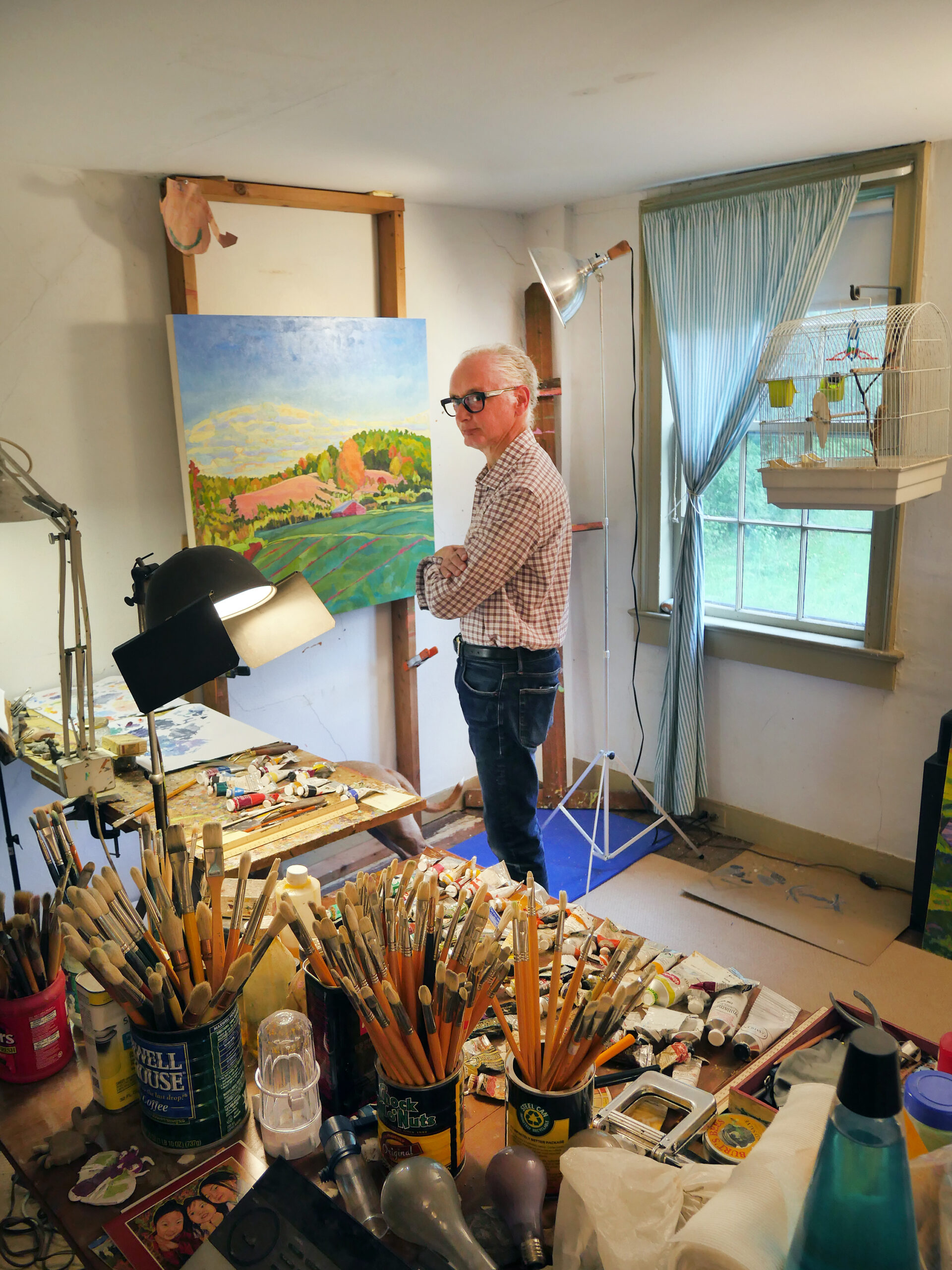
The architect
In 1973, Chandler went off to Cooper Union where he studied architecture. For him, this was a reasonable compromise between the bohemian artist life and practical work. The only problem was that Chandler didn’t like architecture at all. The more he studied it, the less he enjoyed the “rigid nature of it.” He also found the school to be a difficult place in general.
“I didn’t dislike Cooper Union, but the word ‘like’ is also hard to apply to it,” Chandler explains. “It’s tough, challenging and a great place to get an education. But it’s not a typical campus where you hang out with your friends and get to know people. It’s all about business.”
He grew increasingly disillusioned during his time there.
“I left Cooper Union knowing that I didn’t want to pursue a career in architecture,” says Chandler. “I didn’t have a passion for it. My fellow students were literally dreaming about architecture. I never did. I dreamt about paint.”
Today, there’s scarcely a right angle in any of Chandler’s scenes.
“I will admit, many of my buildings do defy gravity,” he laughs. “That’s the beauty of doing artwork for yourself. You can create anything you want.”
The artist
In 1977, after leaving Cooper Union, Chandler enrolled at the Art Students League in New York City, where he studied figure drawing, painting, sculpture and making films. He also moved to Brooklyn at this time, continuing to explore his passion for music and often marrying it with his love for films by creating his own soundtracks.
“I learned Latin percussion from several Puerto Rican friends in Brooklyn,” recalls Chandler. “I got better and better, and I eventually performed percussion live for my films as they played. I loved it. Music is really the best form of expression. You create something, and then it’s gone in a moment.”
Eventually, Chandler scaled back from filmmaking to focus more on painting, but he still loves film.
“I’m still an animator,” says Chandler. “It’s only one frame now, but there’s still a great deal of animation going on.”
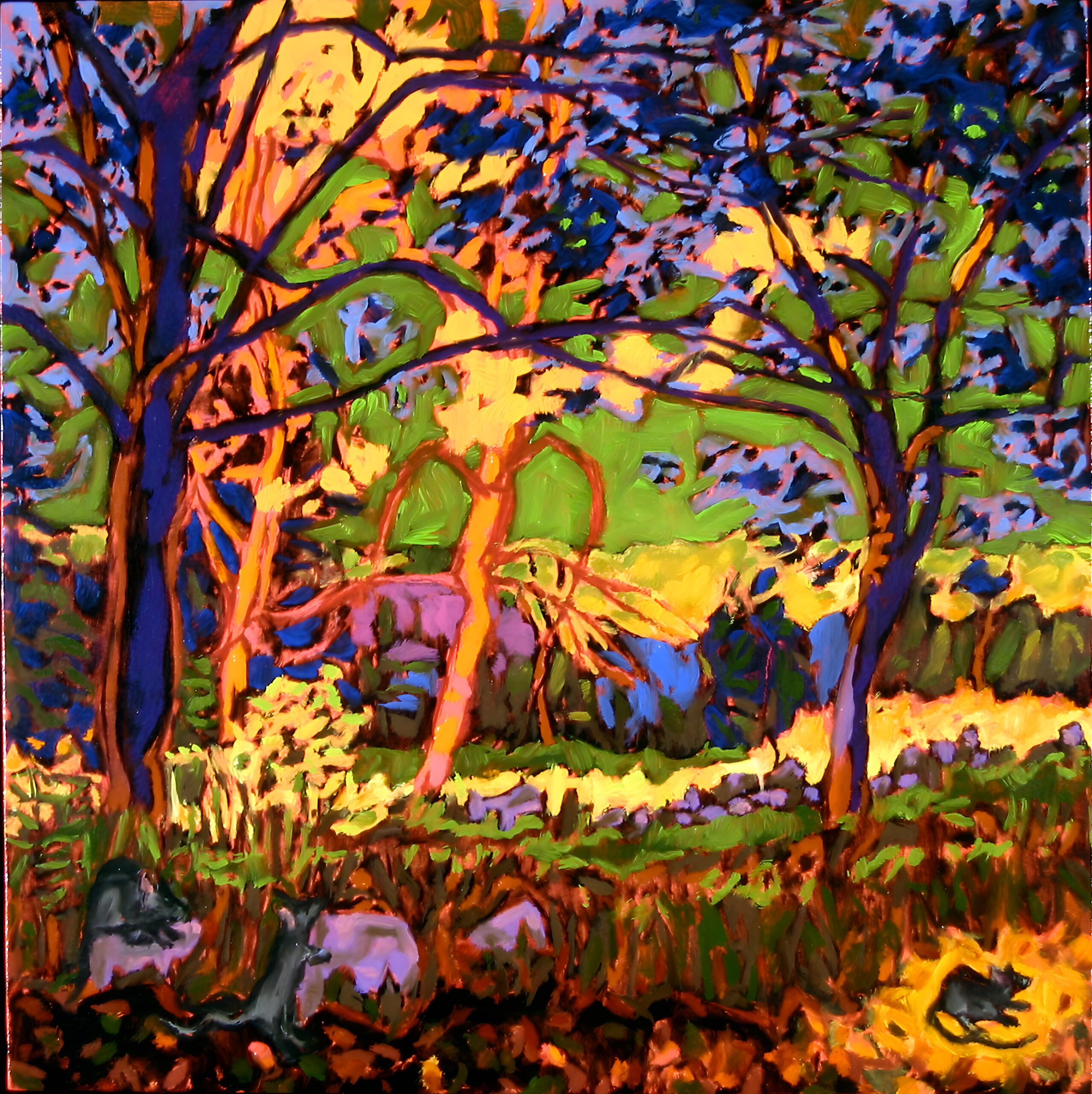
The art director
In 1978, Chandler landed a job at the advertising agency Ogilvy & Mather International. He was hired as the director of imaging, which Chandler calls a “fancy term for manager of the art department.”
He worked at Ogilvy for 42 years, managing several teams of creatives, including artists, designers, illustrators and photographers. Chandler also helped modernize the agency, introducing 3D graphics and 3D printing to their art department. However, it was the people that he appreciated the most.
“The company afforded me the ability to hire the people I wanted to hire and create my own niche,” he explains. “I got to mentor dozens and dozens of illustrators, and that was the greatest benefit of doing all of that.”
The painter
Chandler eventually met his wife and moved out of New York City to Westchester. After spending time in Ossining and Croton-on-Hudson, they settled in Cross River, where they have lived for 32 years. All the while, Chandler continued to paint.
In 2000, Chandler hit a turning point in his life – Findlay Galleries in New York City began to represent his work, giving him the opportunity to participate in larger shows on Madison Avenue and show his work to a much broader audience.
Chandler prepared for this opportunity by joining the Weir Farm Artist-in-Residence (AIR) program in Wilton, CT, where he fully dedicated himself to his work.
“I was immersed in art 24/7, which I had never done before,” he explains. “This was the launch of who I am now. It was absolutely a transition for me. My wife was gracious enough to take care of our new baby at that time, and it opened up that world for me.”
Chandler held several shows with David Finlay Galleries over the next 10 years.
“That was a wonderful experience for me,” remembers Chandler. “Suddenly, my work was selling all over the world in places like Europe or Mexico. It really spoiled the heck out of me.”
His momentum as a painter continued to grow, and he traveled extensively, easel in tow, painting in places like Lisbon and Amsterdam. He would refer to these excursions as ‘painting trips,’ which were not to be confused with regular vacations.
“Either I go on a painting trip or not,” says Chandler. “On those trips, I’m very conscious about what I’m going for and how I’m going to approach the day. It’s all about painting. My family realizes the difference. It’s not about a vacation for me; it’s working the entire time. I love it, but it’s not relaxing.”
Those trips resulted in numerous art shows that demonstrated how he saw various parts of the world, such as Holland, Ireland, Wales, Portugal and the U.S. Virgin Islands.
“I have so many stories of people around the world watching me paint,” says Chandler. “Like in Provence, France, when a little girl in a pickup truck squealed over my shoulder, shouting, ‘Magnifique!’ as she went by. That makes the experience much better. Just as long as it’s not some tourist knocking my easel over. Fortunately, my wife helps to keep people at bay by talking to them before they can get closer.”
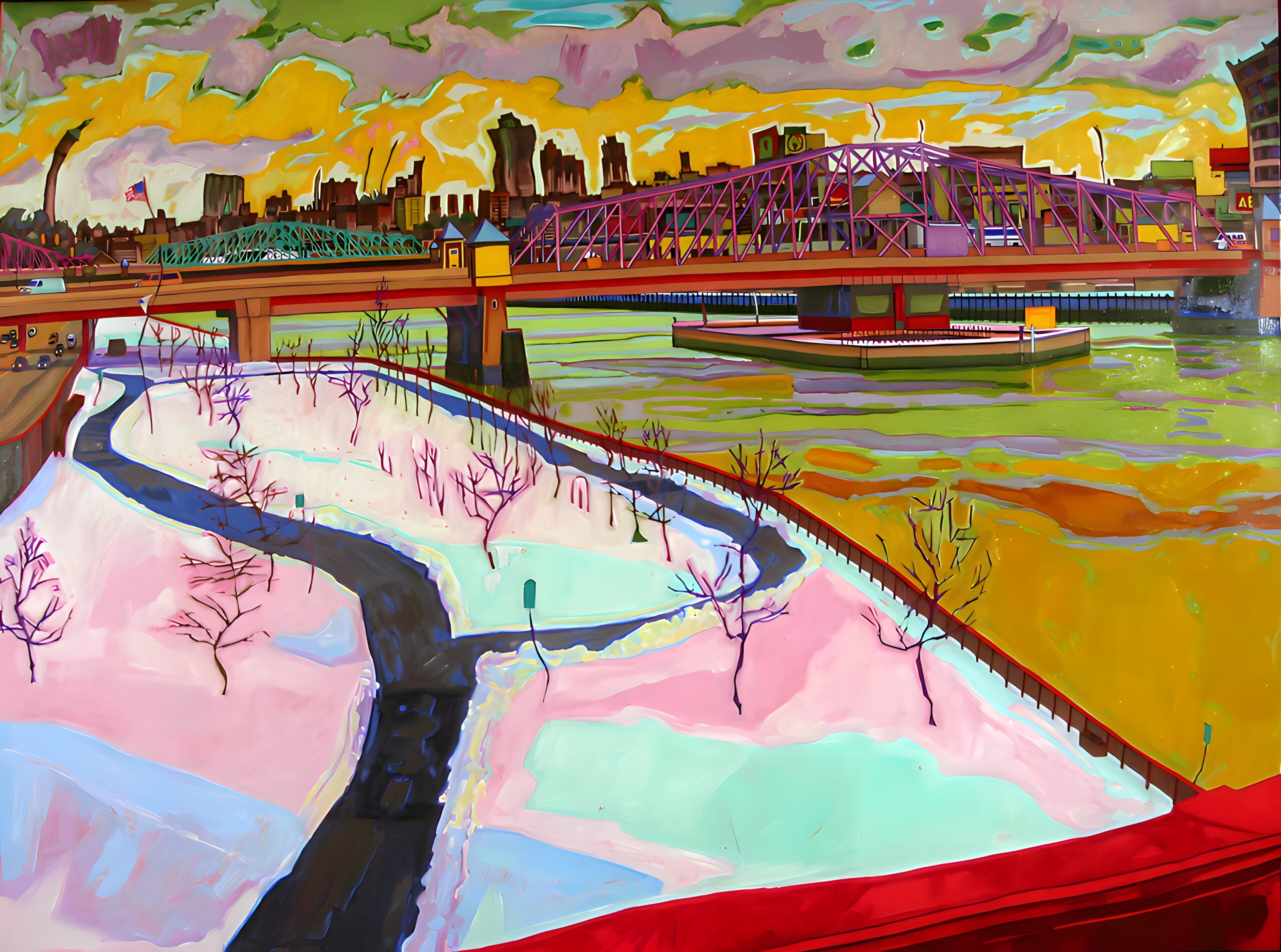
The master
When the pandemic hit in 2020, Chandler made a bold decision: he left his advertising career behind and fully committed to his painting career.
Chandler now paints every day, continuing to travel with his sketchbook or easel right beside him.
“I’m living the dream,” he admits. “As cliche as that is, I love selling my paintings, whether it’s around the world, as I have, or right here in Katonah.”
Chandler also moonlights as an artist representative. He enjoys helping and guiding newer creatives in the industry, helping them find work as designers, photographers, artists or whatever their skill set may be. Yet again, the quiet Chandler is letting his voice be heard, this time speaking on behalf of younger artists.
Chandler’s artwork will be on display at Oak&Oil Gallery in Katonah from November 18 through December 31.
This article was published in the November/December 2023 edition of Connect to Northern Westchester
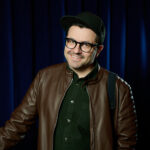
Justin is an award-winning designer and photographer. He was the owner and creative director at Future Boy Design, producing work for clients such as National Parks Service, Vintage Cinemas, The Tarrytown Music Hall, and others. His work has appeared in Bloomberg TV, South by Southwest (SXSW), Edible Magazine, Westchester Magazine, Refinery 29, the Art Directors Club, AIGA and more.
Justin is a two-time winner of the International Design Awards, American Photography and Latin America Fotografia. Vice News has called Justin Negard as “one of the best artists working today.”
He is the author of two books, On Design, which discusses principles and the business of design, and Bogotà which is a photographic journey through the Colombian capital.
Additionally, Justin has served as Creative Director at CityMouse Inc., an NYC-based design firm which provides accessible design for people with disabilities, and has been awarded by the City of New York, MIT Media Lab and South By Southwest.
He lives in Katonah with his wonderfully patient wife, son and daughter.










